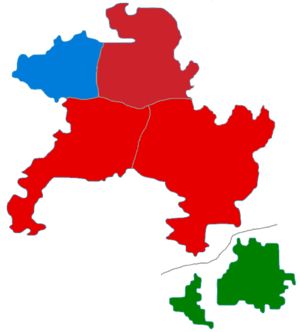Akashian general election, 2014
| |||||||||||||||||||||||||||||||||||||||||||||||||||||||||||||||||||||||||||||||||||||
400 seats in the National Assembly 201 seats needed for a majority | |||||||||||||||||||||||||||||||||||||||||||||||||||||||||||||||||||||||||||||||||||||
|---|---|---|---|---|---|---|---|---|---|---|---|---|---|---|---|---|---|---|---|---|---|---|---|---|---|---|---|---|---|---|---|---|---|---|---|---|---|---|---|---|---|---|---|---|---|---|---|---|---|---|---|---|---|---|---|---|---|---|---|---|---|---|---|---|---|---|---|---|---|---|---|---|---|---|---|---|---|---|---|---|---|---|---|---|---|
| Turnout | 88,8% | ||||||||||||||||||||||||||||||||||||||||||||||||||||||||||||||||||||||||||||||||||||
| |||||||||||||||||||||||||||||||||||||||||||||||||||||||||||||||||||||||||||||||||||||
 Most voted party by province | |||||||||||||||||||||||||||||||||||||||||||||||||||||||||||||||||||||||||||||||||||||
| |||||||||||||||||||||||||||||||||||||||||||||||||||||||||||||||||||||||||||||||||||||
A general election was held in Akashi on 28 June 2014. The Kōko Kaga government was re-elected with a minority.
While Kōko remained popular going into the election, the "Kōkomania" that had propelled the Socialist Party to a landslide victory four years before had dissipated, and it was expected that the party would lose its majority and have to form a coalition.
The centre-right leadership remained unchanged. Hiroshi Sone was not blamed for the Moderate People's Party's poor result during the "red wave" and sought to fight another election to prove himself as party leader. Liana Ferrari weathered the humiliating blow largely through her tight grip on the United Reform Party, which squelched potential leadership challenges.
With the Socialists being the incumbents, one party leader that attracted greater attention was Momoka Nishimura of the Future Party. Like Kōko, she held the distinction of being her party's youngest leader, and proved an astute campaigner, nudging the party closer to the left and pirate politics.
Results
| General election, 28 June 2014 | |||||||||
|---|---|---|---|---|---|---|---|---|---|

| |||||||||
| Party | Party list | Constituency | Total seats |
+/- | |||||
| PR | % | +/− | STV | % | +/− | ||||
| Socialist Party | 1.610.851 | 20,5% | -18,5% | 1.612.429 | 20,5% | -22,1% | 100 | -110 | |
| Moderate People's Party | 1.272.965 | 16,2% | +5,6% | 1.455.119 | 18,5% | +8,2% | 72 | +36 | |
| Communist Party | 974.369 | 12,4% | -2,4% | 983.189 | 12,5% | +0,8% | 55 | +5 | |
| Green Party | 801.497 | 10,2% | +2,5% | 810.147 | 10,3% | +2,4% | 40 | +15 | |
| United Reform Party | 754.350 | 9,6% | +2,1% | 668.568 | 8,5% | +1,1% | 37 | +16 | |
| Future Party | 652.198 | 8,3% | -0,2% | 613.510 | 7,8% | -0,4% | 29 | +2 | |
| National Cooperative Party | 636.483 | 8,1% | +1,6% | 605.644 | 7,7% | +1,0% | 26 | +6 | |
| National Union | 534.331 | 6,8% | +5,0% | 464.065 | 2,0% | +3,0% | 17 | +12 | |
| Conservative National Party | 212.161 | 2,7% | +1,5% | 204.503 | 2,6% | +1,9% | 7 | +7 | |
| Akashi Renewal Party | 180.730 | 2,3% | +1,2% | 196.638 | 2,5% | +1,7% | 6 | +6 | |
| Independents | 227.877 | 2,9% | +1,6% | 251.696 | 3,2% | +1,5% | 11 | +5 | |
| Total | 7.857.811 | 100% | — | 7.865.509 | 100% | — | 400 | — | |
| Registered voters and turnout | 8.848.886 | 88,8% | — | 8.848.886 | 88,9% | ||||
| Bloc strength | ||
|---|---|---|
| Bloc | Parties | Seats |
| Crimson bloc | CP, GP | 95 |
| Pale crimson bloc | SP, NU | 117 |
| Light yellow bloc | NCP, FP | 55 |
| Light blue bloc | MPP, URP | 109 |
| Dark blue bloc | CNP, ARP | 13 |
- Government: Socialist Party–Green Party–National Cooperative Party–National Union coalition.
Predictably, the SP lost its anomalous majority. Even with a loss of 18–22% of the vote and 110 seats, they held onto a plurality of 100 seats. This was achieved mainly by finishing a close second in the provinces they lost — Takao to the MPP, Kobi to the CP, and Shimachi to the GP — and retaining pluralities in Kagi and Matō.
The SP's tide receding allowed virtually all parties to make gains and claim success on the night. The light blue bloc increased its tally by 52 seats, narrowing the gap with the pale crimson bloc to only 8 seats. Similarly strong gains were made by the GP and NU, many of whose voters had temporarily switched to the SP during the "red wave" of 2010.
In the new legislature, the crimson and pale crimson blocs combined had a majority. However, Kōko was conscious of the parliamentary dynamics that hindered Shinobu Furukawa's last term, and thus sought to keep good relations with the light yellow bloc as well. She formed a coalition with the GP, NCP, and NU, which at 183 seats was technically a minority, but could count on either CP or FP support to achieve a majority.



